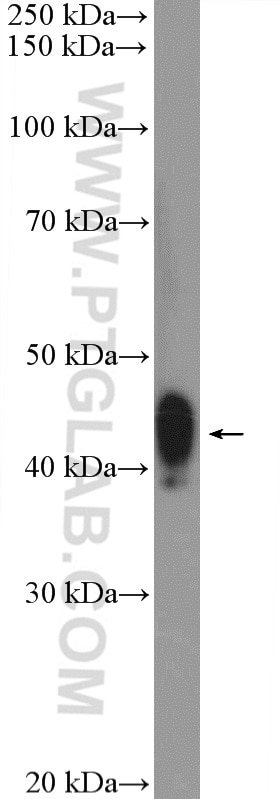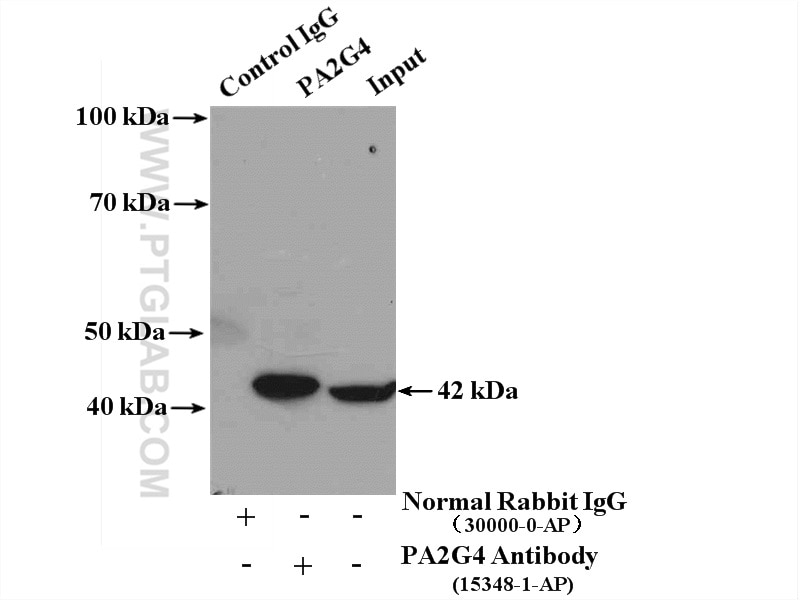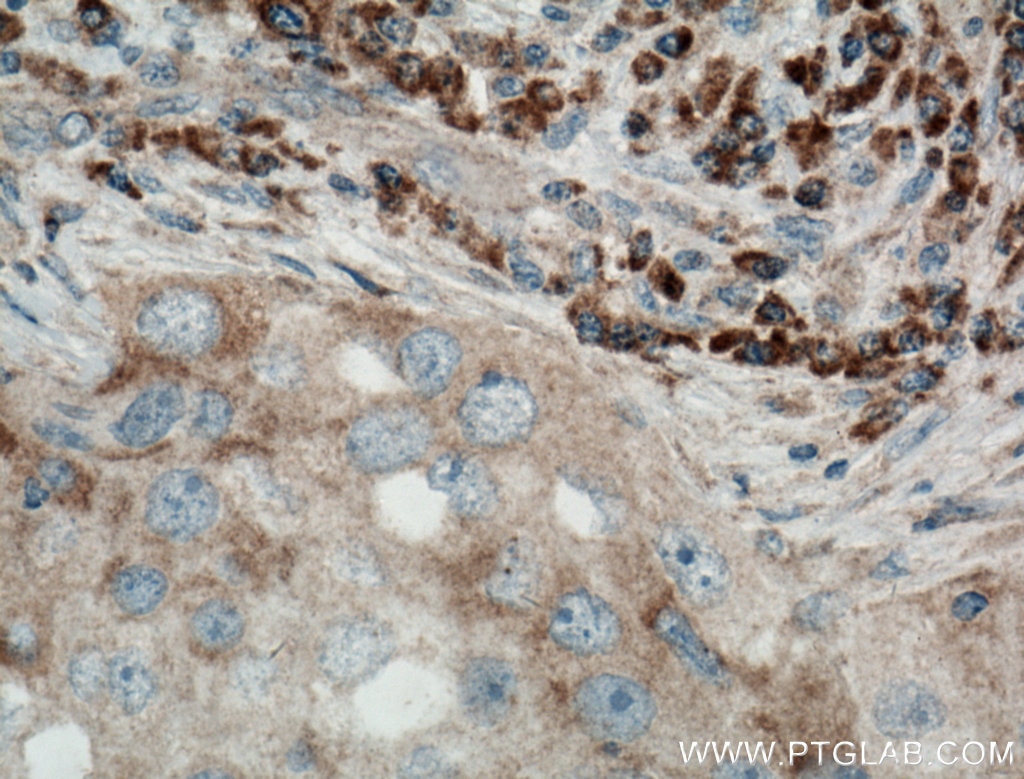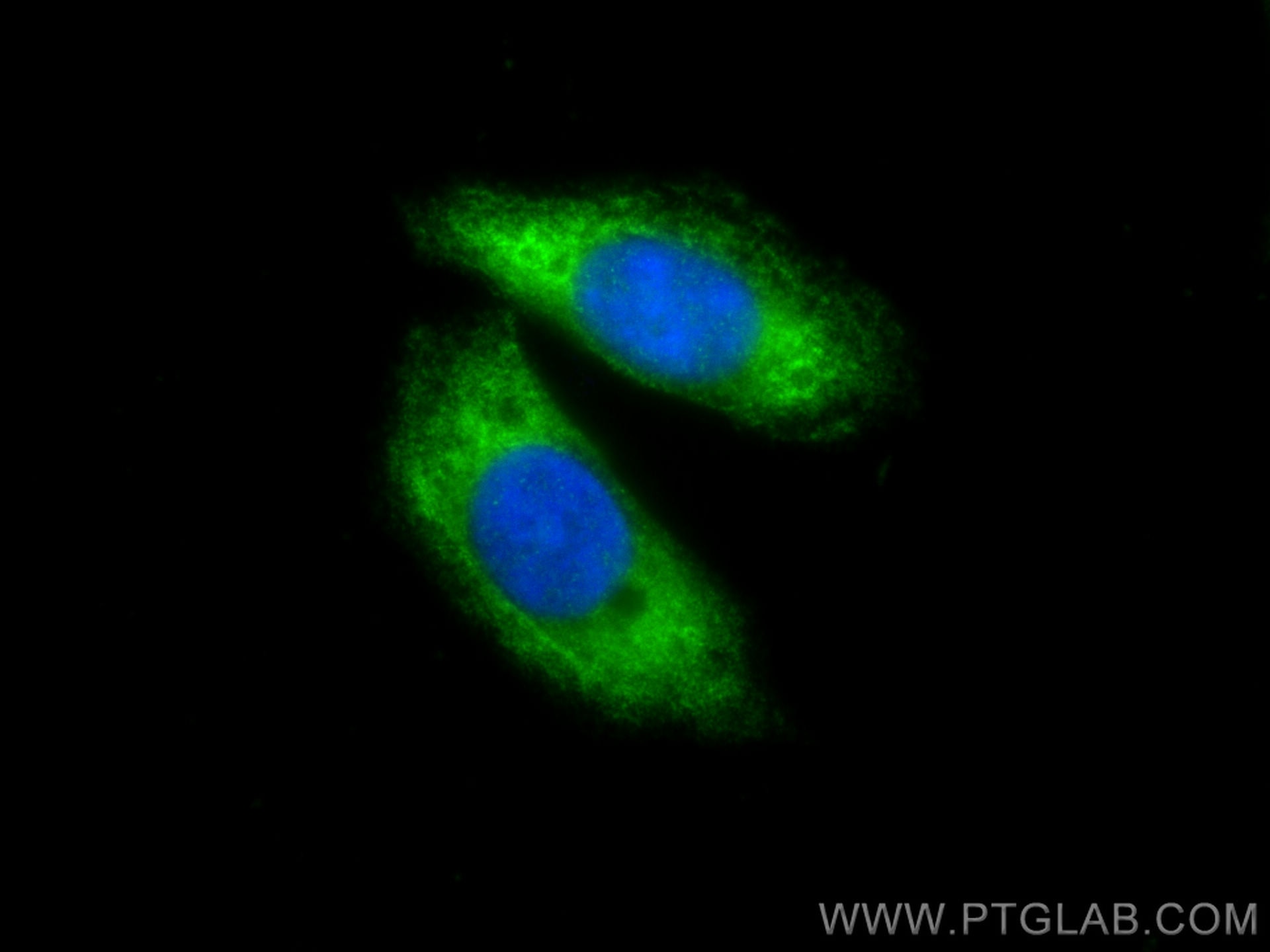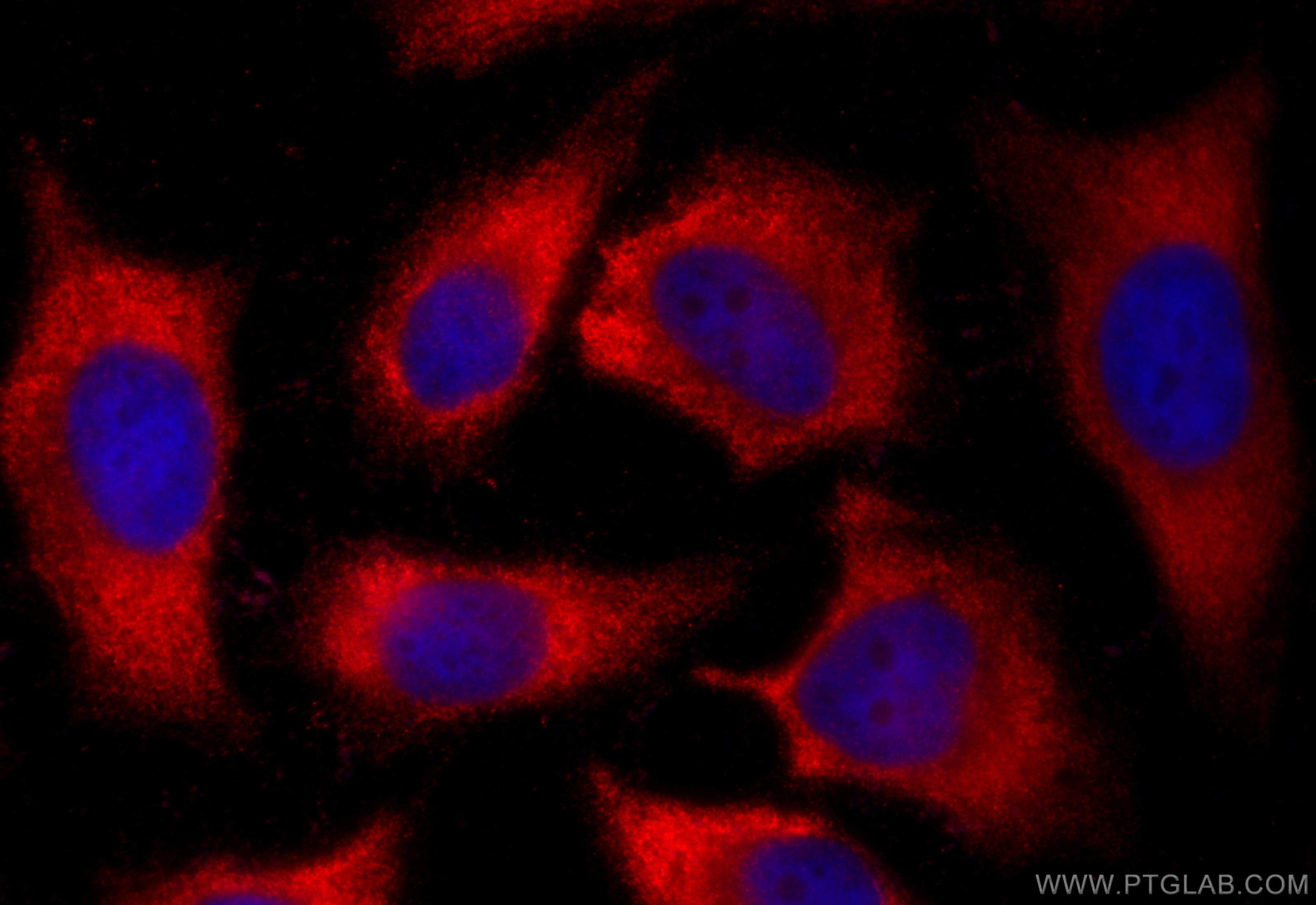- Phare
- Validé par KD/KO
Anticorps Polyclonal de lapin anti-PA2G4
PA2G4 Polyclonal Antibody for WB, IHC, IF/ICC, IP, ELISA
Hôte / Isotype
Lapin / IgG
Réactivité testée
Humain, rat, souris
Applications
WB, IHC, IF/ICC, IP, CoIP, RIP, ELISA
Conjugaison
Non conjugué
N° de cat : 15348-1-AP
Synonymes
Galerie de données de validation
Applications testées
| Résultats positifs en WB | cellules HEK-293T, cellules HEK-293, cellules HeLa, cellules HL-60, cellules Jurkat, cellules MCF-7, cellules PC-3, tissu splénique de rat |
| Résultats positifs en IP | cellules Jurkat |
| Résultats positifs en IHC | tissu de cancer du sein humain, il est suggéré de démasquer l'antigène avec un tampon de TE buffer pH 9.0; (*) À défaut, 'le démasquage de l'antigène peut être 'effectué avec un tampon citrate pH 6,0. |
| Résultats positifs en IF/ICC | cellules HepG2, cellules HeLa |
Dilution recommandée
| Application | Dilution |
|---|---|
| Western Blot (WB) | WB : 1:1000-1:6000 |
| Immunoprécipitation (IP) | IP : 0.5-4.0 ug for 1.0-3.0 mg of total protein lysate |
| Immunohistochimie (IHC) | IHC : 1:50-1:500 |
| Immunofluorescence (IF)/ICC | IF/ICC : 1:200-1:800 |
| It is recommended that this reagent should be titrated in each testing system to obtain optimal results. | |
| Sample-dependent, check data in validation data gallery | |
Applications publiées
| KD/KO | See 1 publications below |
| WB | See 5 publications below |
| IHC | See 3 publications below |
| IF | See 3 publications below |
| IP | See 1 publications below |
| CoIP | See 1 publications below |
| RIP | See 1 publications below |
Informations sur le produit
15348-1-AP cible PA2G4 dans les applications de WB, IHC, IF/ICC, IP, CoIP, RIP, ELISA et montre une réactivité avec des échantillons Humain, rat, souris
| Réactivité | Humain, rat, souris |
| Réactivité citée | Humain |
| Hôte / Isotype | Lapin / IgG |
| Clonalité | Polyclonal |
| Type | Anticorps |
| Immunogène | PA2G4 Protéine recombinante Ag7587 |
| Nom complet | proliferation-associated 2G4, 38kDa |
| Masse moléculaire calculée | 44 kDa |
| Poids moléculaire observé | 42 kDa, 48 kDa |
| Numéro d’acquisition GenBank | BC001951 |
| Symbole du gène | PA2G4 |
| Identification du gène (NCBI) | 5036 |
| Conjugaison | Non conjugué |
| Forme | Liquide |
| Méthode de purification | Purification par affinité contre l'antigène |
| Tampon de stockage | PBS with 0.02% sodium azide and 50% glycerol |
| Conditions de stockage | Stocker à -20°C. Stable pendant un an après l'expédition. L'aliquotage n'est pas nécessaire pour le stockage à -20oC Les 20ul contiennent 0,1% de BSA. |
Informations générales
PA2G4 (EBP1), first identified as an ErbB3 binding protein, is a 38 kDa protein that is widely expressed in cultured cells and tissues. The presence of several functional domains such as a nuclear localization sequence (NLS), LxxLL and LxCxE suggests the involvement of Ebp1 in cell signaling pathways and gene transcription regulation. This antibody is a rabbit polyclonal antibody raised against full length PA2G4 of human origin.
Protocole
| Product Specific Protocols | |
|---|---|
| WB protocol for PA2G4 antibody 15348-1-AP | Download protocol |
| IHC protocol for PA2G4 antibody 15348-1-AP | Download protocol |
| IF protocol for PA2G4 antibody 15348-1-AP | Download protocol |
| IP protocol for PA2G4 antibody 15348-1-AP | Download protocol |
| Standard Protocols | |
|---|---|
| Click here to view our Standard Protocols |
Publications
| Species | Application | Title |
|---|---|---|
Adv Sci (Weinh) Primate-Specific DAZ Regulates Translation of Cell Proliferation-Related mRNAs and is Essential for Maintenance of Spermatogonia | ||
Cell Biosci PA2G4 promotes the metastasis of hepatocellular carcinoma by stabilizing FYN mRNA in a YTHDF2-dependent manner.
| ||
Nat Cardiovasc Res The highly conserved PIWI-interacting RNA CRAPIR antagonizes PA2G4-mediated NF110-NF45 disassembly to promote heart regeneration in mice | ||
FASEB J Evidence for a fragile X messenger ribonucleoprotein 1 (FMR1) mRNA gain-of-function toxicity mechanism contributing to the pathogenesis of fragile X-associated premature ovarian insufficiency | ||
Methods Enzymol Selective ribosome profiling as a tool to study interactions of translating ribosomes in mammalian cells | ||
J Dent Sci Proliferation-associated 2G4 P48 is stabilized by malignant T-cell amplified sequence 1 and promotes the proliferation of head and neck squamous cell carcinoma |


